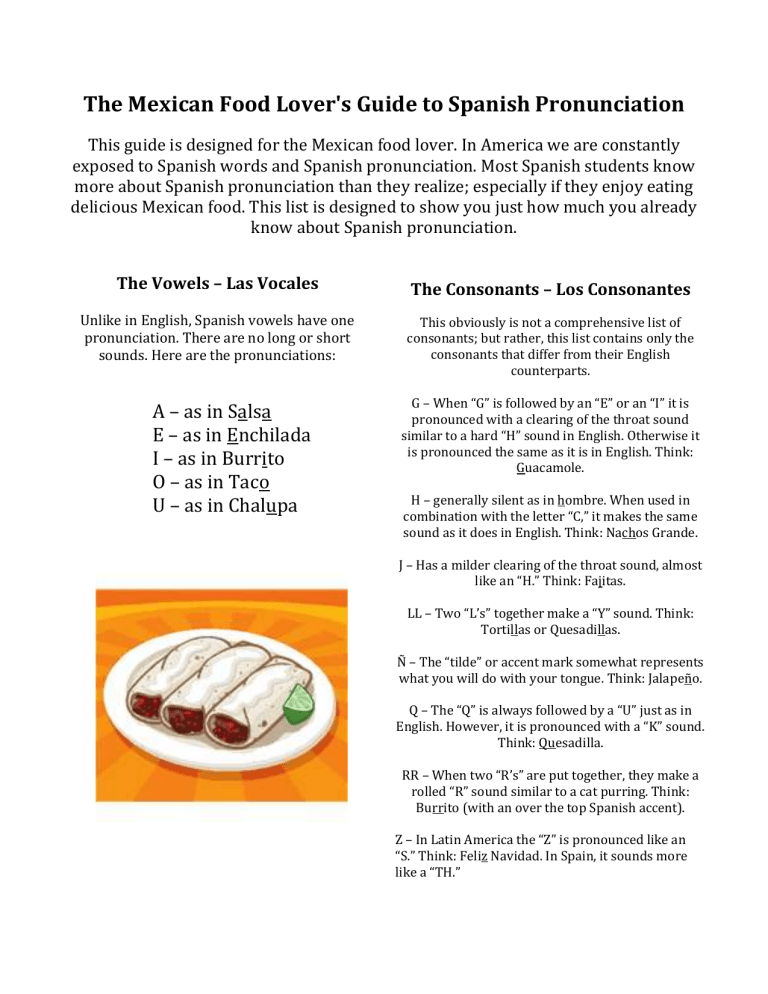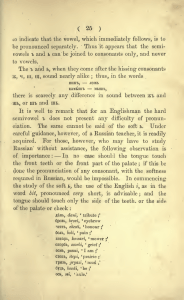
The Mexican Food Lover's Guide to Spanish Pronunciation This guide is designed for the Mexican food lover. In America we are constantly exposed to Spanish words and Spanish pronunciation. Most Spanish students know more about Spanish pronunciation than they realize; especially if they enjoy eating delicious Mexican food. This list is designed to show you just how much you already know about Spanish pronunciation. The Vowels – Las Vocales The Consonants – Los Consonantes Unlike in English, Spanish vowels have one pronunciation. There are no long or short sounds. Here are the pronunciations: This obviously is not a comprehensive list of consonants; but rather, this list contains only the consonants that differ from their English counterparts. A – as in Salsa E – as in Enchilada I – as in Burrito O – as in Taco U – as in Chalupa G – When “G” is followed by an “E” or an “I” it is pronounced with a clearing of the throat sound similar to a hard “H” sound in English. Otherwise it is pronounced the same as it is in English. Think: Guacamole. H – generally silent as in hombre. When used in combination with the letter “C,” it makes the same sound as it does in English. Think: Nachos Grande. J – Has a milder clearing of the throat sound, almost like an “H.” Think: Fajitas. LL – Two “L’s” together make a “Y” sound. Think: Tortillas or Quesadillas. Ñ – The “tilde” or accent mark somewhat represents what you will do with your tongue. Think: Jalapeño. Q – The “Q” is always followed by a “U” just as in English. However, it is pronounced with a “K” sound. Think: Quesadilla. RR – When two “R’s” are put together, they make a rolled “R” sound similar to a cat purring. Think: Burrito (with an over the top Spanish accent). Z – In Latin America the “Z” is pronounced like an “S.” Think: Feliz Navidad. In Spain, it sounds more like a “TH.”



